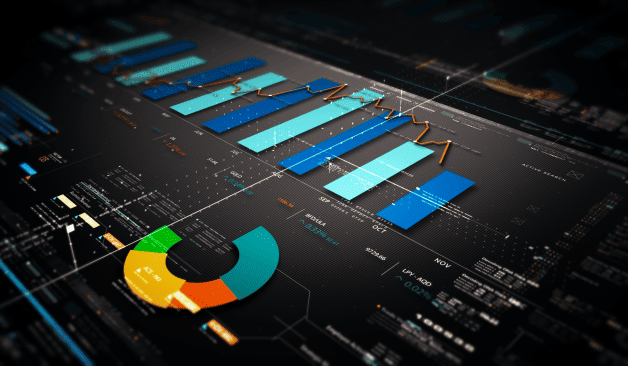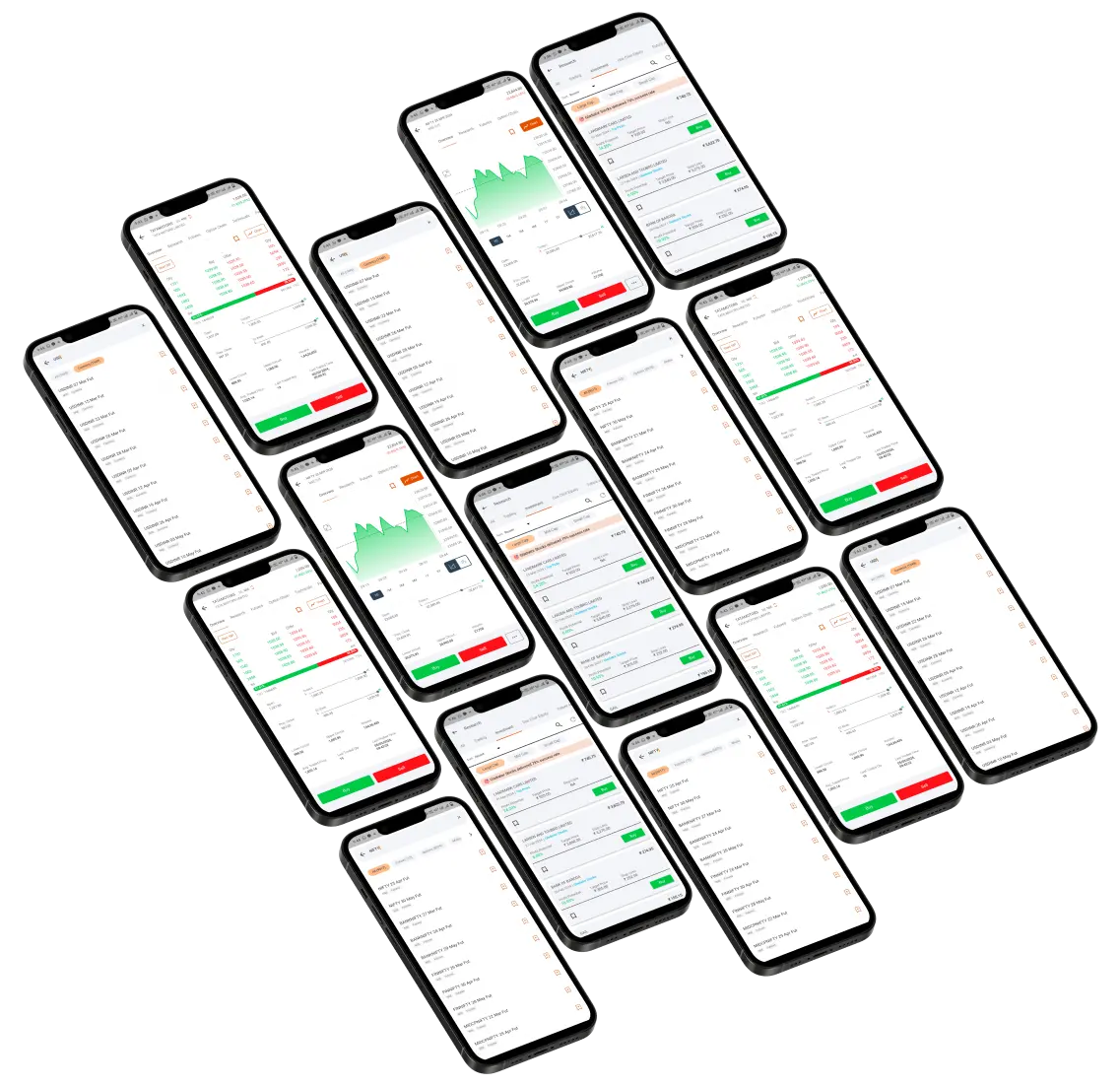
Understanding the Importance of Volume
Price and volume are considered as the king of chart analysis as all indicators get constructed by combining them. Therefore, price and volume are the two ingredients that prepare any indicator for market analysis.
Volume refers to the number of shares or contracts traded in a given period of time. The concept of volume is based on the idea that price movements in the market are driven by the actions of buyers and sellers. When buyers and sellers are actively participating in the market, the trading volume is high, and vice versa.
Let's say you are watching the trading activity of a particular stock over the course of a day. The stock's current price is 500 rupees per share, and the following trades take place:
• Trade 1:10 shares are bought at 500 rupees per share
• Trade 2:5 shares are sold at 490 rupees per share
• Trade 3:20 shares are bought at 550 rupees per share
• Trade 4:15 shares are sold at 500 rupees per share
• Trade 5:30 shares are bought at 510 rupees per share
The total volume for the day is calculated by adding up the number of shares traded during each trade, which gives us a total volume of 80 shares for the day. So if A has bought 10 shares for 500 rupees, then someone must have sold the same shares at the same price to A, therefore volume would be not 20 shares, but 10 share, that is, the number of shares traded in 1 trade or transaction.
But how should we analyse and interpret volume? --The trading volume can be used to gain insights into the behaviour of market participants.
Trend Confirmation
An increase in trading volume can often be associated with an increase in buying or selling pressure, which can in turn lead to a corresponding increase in the price of a stock. This is because when there is a higher volume of buyers than sellers, it indicates greater interest and confidence in a particular stock , which means that the demand for the stock increases, which can push up its price. Conversely, when there is a higher volume of sellers than buyers, the supply of the stock increases, which can lead to a decrease in its price. For example, if a company reports better-than-expected earnings, it may attract a higher trading volume as investors become more interested in the company's prospects, which can drive up its stock price.
Here's an example table that illustrates how volume can confirm price movements in the market:
|
Date |
Open Price |
Close Price |
Volume |
Price Movement |
Volume Movement |
|
Jan 1 |
100.00 |
101.50 |
100,000 |
N/A |
N/A |
|
Jan 2 |
101.50 |
102.00 |
150,000 |
Up |
High |
|
Jan 3 |
102.00 |
102.50 |
110,000 |
Up |
Moderate |
|
Jan 4 |
102.50 |
102.50 |
100,000 |
Unchanged |
Low |
|
Jan 5 |
102.50 |
101.00 |
90,000 |
Down |
Low |
|
Jan 6 |
101.00 |
100.50 |
75,000 |
Down |
Low |
|
Jan 7 |
100.50 |
99.00 |
250,000 |
Down |
High |
|
Jan 8 |
99.00 |
98.25 |
200,000 |
Down |
High |
In this example, we are looking at the daily price and volume movements of a particular stock over a period of nine days. As you can see, the price movements are listed in the "Price Movement" column, and the volume movements are listed in the "Volume Movement" column.
The table shows the trading activity of XYZ stock over five days. Each day's volume is the number of shares that were bought and sold during that trading session.
On day 1, the stock opened at INR100 and closed at INR101.5. There was heavy buying and selling activity, with a volume of 100,000 shares. This indicates high market participation and interest in the stock. The increase in price and high volume suggest bullish sentiment.
On day 2, the stock opened at INR101.5 and closed higher at INR102.00 ,as there was high volume, with 150,000 shares traded.
Onn day 3, the stock opened at INR102.00 and closed at INR102.50. There was moderate volume with 110,000 shares traded. The stock closed higher than the opening price, which suggests bullish sentiment, but the volume was relatively low.
On day 4, the stock opened at INR102.50 and closed at INR102.50. There was low volume, with only 100,000 shares traded. The stock closed unchanged, which indicates a lack of conviction among traders.
On day 7, the stock opened at INR100.50 and closed at INR99.00. There was heavy buying and selling activity, with a volume of 250,000 shares. The price closed below than the opening price, suggesting bearish sentiment, and the high volume confirms the strength of the move.
In summary, high trading volume can indicate strong market interest and confirm a price trend, while low volume may indicate a lack of conviction among traders.
In summary, an increase in trading volume can often be associated with an increase in buying or selling pressure, which can lead to a corresponding increase in the price of a stock. However, the relationship between trading volume and stock price is complex, and other factors can also impact the price of a stock.
It's important to note, however, that there is no guaranteed relationship between trading volume and stock price. In some cases, high trading volume may not necessarily result in a corresponding increase in the stock price, and vice versa. Other factors, such as macroeconomic trends, company fundamentals, and market sentiment, can also influence stock prices.
Liquidity
Volume is a crucial indicator of liquidity in any market, including the stock market. Liquidity refers to the ability to buy or sell an asset quickly and easily without significantly impacting its price.
When a market has high trading volume, it generally indicates a high level of liquidity. This is because there are many buyers and sellers actively participating in the market, which makes it easier to buy or sell a particular asset at a fair price. High trading volume also tends to result in more efficient price discovery, as prices are more likely to accurately reflect the supply and demand dynamics of the market.
On the other hand, a market with low trading volume may be illiquid, meaning it may be difficult to buy or sell assets quickly without affecting their price. This is because there may not be many buyers or sellers actively participating in the market, which can lead to wider bid-ask spreads and lower liquidity.
In the context of the stock market, liquidity is important for investors because it allows them to enter or exit positions quickly and easily, without impacting the price of the stock. This is particularly important for large institutional investors who need to buy or sell significant amounts of stock without affecting the market.
Breakouts
Volume is a critical indicator for traders looking to identify potential breakouts in the stock market. Breakouts occur when a stock's price breaks through a key level of support or resistance, often indicating a shift in market sentiment and potentially creating a new trend. You can learn more about breakouts here.
One way volume helps in breakouts is by confirming the strength and validity of the breakout. For example, when a stock breaks through a resistance level on high trading volume, it suggests that there is a significant increase in buying pressure, which can help confirm the validity of the breakout. This can help traders make more informed decisions about whether to enter or exit positions.
In addition, volume can also help identify potential false breakouts, which occur when a stock temporarily breaks through a support or resistance level but fails to sustain the momentum and ultimately reverses back. When a breakout occurs on low trading volume, it may suggest that the move is not sustainable and could be a false breakout. In contrast, when a breakout occurs on high trading volume, it is more likely to be a valid breakout and a potential trend reversal.
Finally, volume can also help traders identify potential breakout opportunities before they occur. By monitoring trading volume and identifying patterns of increasing volume, traders can anticipate potential breakout opportunities and position themselves to take advantage of them.
In summary, volume is a critical tool for traders looking to identify potential breakouts in the stock market. By confirming the strength and validity of breakouts, identifying potential false breakouts, and anticipating breakout opportunities, traders can use volume to make more informed trading decisions and potentially achieve greater returns.
Volume Spikes and Breakout
Volume spikes and breakouts are related concepts in technical analysis, as both can indicate potential changes in market sentiment and price movements.
A volume spike is a sudden and significant increase in trading volume compared to its average trading volume over a given period of time. Volume spikes can occur for a variety of reasons, such as news events, earnings releases, or changes in market sentiment. When volume spikes occur, it can be a signal to traders and investors that there is increased interest and activity in the stock, which can lead to potential price movements.
A breakout, on the other hand, occurs when the price of a stock moves outside a defined price range or technical pattern, such as a resistance level or a trendline. A breakout can indicate a potential change in market sentiment and lead to significant price movements in the direction of the breakout.
Volume spikes can be a valuable tool for traders and investors in confirming breakouts and identifying potential trend reversals. When a breakout occurs with a significant increase in trading volume, it can be a strong signal that the breakout is legitimate and that there is strong buying or selling pressure supporting the price movement. Conversely, if a breakout occurs on low trading volume, it may not be a reliable signal and may be more susceptible to a false breakout.
Examples of volume Spikes
A number of volume spikes appear in the above chart. The first occurs on the start of the symmetrical triangle. The second occurs on a breakaway gap from the earlier symmetrical triangle formation. However, the price peaks almost immediately at the top of the volume spike and goes into a consolidation that forms a descending wedge. The fourth volume peak is interesting because it does occur, but after the breakout there was low volume, bolstering Thomas Bulkowski’s, widely known for his research and analysis of chart patterns and technical trading strategies, observations that volume does not necessarily occur on a breakout or confirm a price reversal.
Key takeaways:
There are some general rules that date back to the work of H. M. Gartley in 1935, a prominent technical analyst and trader who developed a method of identifying specific chart patterns in the stock markets.
1. When prices are rising:
- Volume increasing is impressive.
- Volume decreasing is questionable.
- Volume increasing is impressive.
- Volume decreasing is questionable.
3. When a price advance halts with high volume, it is potentially a top.
4. When a price decline halts with high volume, it is potentially a bottom.
In other words, price change on high volume tends to occur in the direction of the trend, and price change on low volume tends to occur on corrective price moves. Higher volume is usually necessary in an advance because it demonstrates active and aggressive interest in owning the stock. However, higher volume is not necessary in a decline; prices can decline because of a lack of interest, and thus potential buyers, in the slock, resulting in relatively light volume.










